#nature-based design costs
Explore tagged Tumblr posts
Text
Quantifying Biophilic Design | The Role of a Cost Estimating Service
Biophilic design, a concept that integrates natural elements into built environments, is no longer a trend—it’s becoming a core philosophy in architectural practice. From living walls and indoor gardens to daylight maximization and water features, these nature-inspired components enhance user well-being, increase productivity, and elevate the aesthetic quality of spaces. Yet, as beautiful and functional as biophilic design may be, it presents financial complexities that must be addressed early in project planning. This is where a cost estimating service plays a critical role.
With expertise in translating conceptual design into measurable costs, firms like AS Estimation & Consultants help developers, architects, and contractors bring biophilic elements into projects without losing control of the budget. Their detailed assessments provide a clear picture of how nature-driven features impact construction costs, lifecycle expenses, and return on investment.
Bringing Nature into the Budget
Biophilic design includes a range of interventions—from skylights and green roofs to natural materials and acoustically engineered water elements. These features can greatly enhance occupant experience, but each one carries a cost. A cost estimating service ensures that these costs are fully understood and quantified before they become financial burdens mid-project.
For instance, installing a vertical green wall may require additional irrigation, lighting, and structural support. A cost estimator will itemize all associated components, including installation labor, ongoing maintenance, and energy usage, providing stakeholders with a full financial picture.
Comparing Natural Materials to Conventional Alternatives
Natural materials such as timber, stone, rammed earth, and reclaimed wood are common in biophilic design. While often preferred for their tactile quality and environmental benefits, these materials may come at a premium, especially if regionally sourced or custom fabricated.
A cost estimating service evaluates these materials not just on their purchase cost but also on their availability, sourcing logistics, installation needs, and long-term performance. This enables clients to make value-driven decisions. For example, AS Estimation & Consultants may recommend thermally treated timber over exotic hardwoods, balancing sustainability, aesthetic quality, and cost-efficiency.
Evaluating Daylighting and Ventilation Strategies
One of the most beneficial aspects of biophilic design is the emphasis on daylighting and natural ventilation. However, maximizing natural light involves strategic window placement, increased glazing, and sometimes structural alterations, all of which affect the budget.
Estimators assess how increased glazing impacts thermal insulation requirements, HVAC loads, and structural support systems. They also analyze how these changes influence energy consumption and long-term operating costs. A proper cost-benefit analysis helps decision-makers weigh the upfront investment against expected energy savings and productivity gains.
Quantifying Return on Wellness Investments
Biophilic design is well known for its positive impact on mental health, stress reduction, and workplace productivity. While these benefits are harder to quantify in monetary terms, a cost estimating service can still model the financial return from these wellness-driven investments.
In commercial settings, improved employee well-being can translate to fewer sick days, lower turnover, and higher engagement. In residential or hospitality projects, enhanced occupant experience can boost property value and customer satisfaction. Cost estimators can use benchmark data and case studies to forecast these indirect returns, supporting business cases for biophilic features.
Incorporating Water Elements and Sensory Features
Water features, another hallmark of biophilic design, range from indoor fountains to reflecting pools and natural filtration systems. While they create soothing environments and acoustic balance, their installation and maintenance can be complex.
A cost estimating service breaks down these features into detailed cost components—pumping systems, water filtration, structural waterproofing, and operational upkeep. AS Estimation & Consultants provides these insights in a way that allows for scaling or substitution without compromising the design intent.
Maintenance Planning and Lifecycle Costing
Many biophilic design features have ongoing maintenance needs. Living walls need pruning and irrigation, water features require cleaning, and daylight-optimized buildings may need higher-spec glazing with better solar control.
A cost estimating service takes these factors into account by preparing lifecycle cost reports. These include not just initial capital costs but also future operational expenditures, allowing clients to plan for sustainability both financially and functionally. This is especially useful for public projects, healthcare facilities, and long-term commercial leases.
Enhancing LEED and Green Certification Potential
Biophilic elements often contribute to sustainability benchmarks like LEED, WELL, or Green Star certifications. These certifications, while offering long-term environmental and financial benefits, come with their own set of compliance costs.
Estimators work in tandem with sustainability consultants to assign costs to credit-earning features—like low-VOC finishes, natural ventilation, and indoor greenery—helping clients understand the investment required to achieve certification goals. AS Estimation & Consultants frequently includes certification cost modeling as part of its preconstruction services.
Conclusion
Biophilic design has the power to transform how people interact with built environments, offering both emotional and tangible returns. However, without a clear understanding of the associated costs, these benefits can be lost to budget overruns or missed opportunities. A cost estimating service brings clarity, accuracy, and foresight to the process, ensuring that the integration of nature into architecture is as financially sound as it is visually and functionally impactful.
With expert services from AS Estimation & Consultants, developers and architects can embrace biophilic design with confidence—knowing that every living wall, skylight, and water feature is accounted for with precision and purpose.
#biophilic estimating#nature-based design costs#green wall pricing#cost estimating service#daylighting budget#timber cost planning#acoustic water features#AS Estimation & Consultants#lifecycle costing#green roof estimating#natural ventilation costs#natural material pricing#LEED cost estimating#wellness ROI#biophilic construction costs#sustainable building costs#reclaimed wood estimates#indoor plant systems#glazing and light costs#green design budgeting#WELL certification costs#eco-feature estimating#living wall maintenance costs#smart sustainability planning#green space valuation#urban wellness design#energy savings estimate#healthy building estimating#water feature cost breakdown#sustainable cost management
1 note
·
View note
Text
The Ocean Sciences Building at the University of Washington in Seattle is a brightly modern, four-story structure, with large glass windows reflecting the bay across the street.
On the afternoon of July 7, 2016, it was being slowly locked down.
Red lights began flashing at the entrances as students and faculty filed out under overcast skies. Eventually, just a handful of people remained inside, preparing to unleash one of the most destructive forces in the natural world: the crushing weight of about 2½ miles of ocean water.
In the building’s high-pressure testing facility, a black, pill-shaped capsule hung from a hoist on the ceiling. About 3 feet long, it was a scale model of a submersible called Cyclops 2, developed by a local startup called OceanGate. The company’s CEO, Stockton Rush, had cofounded the company in 2009 as a sort of submarine charter service, anticipating a growing need for commercial and research trips to the ocean floor. At first, Rush acquired older, steel-hulled subs for expeditions, but in 2013 OceanGate had begun designing what the company called “a revolutionary new manned submersible.” Among the sub’s innovations were its lightweight hull, which was built from carbon fiber and could accommodate more passengers than the spherical cabins traditionally used in deep-sea diving. By 2016, Rush’s dream was to take paying customers down to the most famous shipwreck of them all: the Titanic, 3,800 meters below the surface of the Atlantic Ocean.
Engineers carefully lowered the Cyclops 2 model into the testing tank nose-first, like a bomb being loaded into a silo, and then screwed on the tank’s 3,600-pound lid. Then they began pumping in water, increasing the pressure to mimic a submersible’s dive. If you’re hanging out at sea level, the weight of the atmosphere above you exerts 14.7 pounds per square inch (psi). The deeper you go, the stronger that pressure; at the Titanic’s depth, the pressure is about 6,500 psi. Soon, the pressure gauge on UW’s test tank read 1,000 psi, and it kept ticking up—2,000 psi, 5,000 psi. At about the 73-minute mark, as the pressure in the tank reached 6,500 psi, there was a sudden roar and the tank shuddered violently.
“I felt it in my body,” an OceanGate employee wrote in an email later that night. “The building rocked, and my ears rang for a long time.”
“Scared the shit out of everyone,” he added.
The model had imploded thousands of meters short of the safety margin OceanGate had designed for.
In the high-stakes, high-cost world of crewed submersibles, most engineering teams would have gone back to the drawing board, or at least ordered more models to test. Rush’s company didn’t do either of those things. Instead, within months, OceanGate began building a full-scale Cyclops 2 based on the imploded model. This submersible design, later renamed Titan, eventually made it down to the Titanic in 2021. It even returned to the site for expeditions the next two years. But nearly one year ago, on June 18, 2023, Titan dove to the infamous wreck and imploded, instantly killing all five people onboard, including Rush himself.
The disaster captivated and horrified the world. Deep-sea experts criticized OceanGate’s choices, from Titan’s carbon-fiber construction to Rush’s public disdain for industry regulations, which he believed stifled innovation. Organizations that had worked with OceanGate, including the University of Washington as well as the Boeing Company, released statements denying that they contributed to Titan.
A trove of tens of thousands of internal OceanGate emails, documents, and photographs provided exclusively to WIRED by anonymous sources sheds new light on Titan’s development, from its initial design and manufacture through its first deep-sea operations. The documents, validated by interviews with two third-party suppliers and several former OceanGate employees with intimate knowledge of Titan, reveal never-before-reported details about the design and testing of the submersible. They show that Boeing and the University of Washington were both involved in the early stages of OceanGate’s carbon-fiber sub project, although their work did not make it into the final Titan design. The trove also reveals a company culture in which employees who questioned their bosses’ high-speed approach and decisions were dismissed as overly cautious or even fired. (The former employees who spoke to WIRED have asked not to be named for fear of being sued by the families of those who died aboard the vessel.) Most of all, the documents show how Rush, blinkered by his own ambition to be the Elon Musk of the deep seas, repeatedly overstated OceanGate’s progress and, on at least one occasion, outright lied about significant problems with Titan’s hull, which has not been previously reported.
A representative for OceanGate, which ceased all operations last summer, declined to comment on WIRED’s findings.
5K notes
·
View notes
Text
"Morningside Park, a beloved neighborhood park in Miami with sweeping views of Biscayne Bay, will soon pilot an innovative approach to coastal resilience.
BIOCAP tiles, a 3D-printed modular system designed to support marine life and reduce wave impact along urban seawalls, will be installed on the existing seawall there in spring 2025. BIOCAP stands for Biodiversity Improvement by Optimizing Coastal Adaptation and Performance.
Developed by our team of architects and marine biologists at Florida International University, the uniquely textured prototype tiles are designed to test a new approach for helping cities such as Miami adapt to rising sea levels while simultaneously restoring ecological balance along their shorelines...
Ecological costs of traditional seawalls
Seawalls have long served as a primary defense against coastal erosion and storm surges. Typically constructed of concrete and ranging from 6 to 10 feet in height, they are built along shorelines to block waves from eroding the land and flooding nearby urban areas.
However, they often come at an ecological cost. Seawalls disrupt natural shoreline dynamics and can wipe out the complex habitat zones that marine life relies on.
Marine organisms are crucial in maintaining coastal water quality by filtering excess nutrients, pollutants and suspended particles. A single adult oyster can filter 20-50 gallons of water daily, removing nitrogen, phosphorus and solids that would otherwise fuel harmful algal blooms. These blooms deplete oxygen levels and damage marine ecosystems.
Filter-feeding organisms also reduce turbidity, which is the cloudiness of water caused by suspended sediment and particles. Less water turbidity means more light can penetrate, which benefits seagrasses that require sunlight for photosynthesis. These seagrasses convert carbon dioxide into oxygen and energy-rich sugars while providing essential food and habitat for diverse marine species.
Swirling shapes, shaded grooves

Unlike the flat, lifeless surfaces of typical concrete seawalls, each BIOCAP tile is designed with shaded grooves, crevices and small, water-holding pockets. These textured features mimic natural shoreline conditions and create tiny homes for barnacles, oysters, sponges and other marine organisms that filter and improve water quality.
The tile’s swirling surface patterns increase the overall surface area, offering more space for colonization. The shaded recesses are intended to help regulate temperature by providing cooler, more stable microenvironments. This thermal buffering can support marine life in the face of rising water temperatures and more frequent heat events driven by climate change.
Another potential benefit of the tiles is reducing the impact of waves.
When waves hit a natural shoreline, their energy is gradually absorbed by irregular surfaces, tide pools and vegetation. In contrast, when waves strike vertical concrete seawalls, the energy is reflected back into the water rather than absorbed. This wave reflection – the bouncing back of wave energy – can amplify wave action, increase erosion at the base of the wall and create more hazardous conditions during storms.
The textured surfaces of the BIOCAP tiles are designed to help diffuse wave energy by mimicking the natural dissipation found on undisturbed shorelines.
The design of BIOCAP takes cues from nature. The tile shapes are based on how water interacts with different surfaces at high tide and low tide. Concave tiles, which curve inward, and convex tiles, which curve outward, are installed at different levels along the seawall. The goal is to deflect waves away from the seawall, reduce direct impact and help minimize erosion and turbulence around the wall’s foundation.A
How we will measure success
After the BIOCAP tiles are installed, we plan to assess how the seawall redesign enhances biodiversity, improves water quality and reduces wave energy. This two-year pilot phase will help assess the long-term value of ecologically designed infrastructure.
To evaluate biodiversity, we will use underwater cameras to capture time-lapse imagery of the marine life that colonizes the tile surfaces. These observations will aid in documenting species diversity and habitat use over time...
In the coming year, we’ll be watching with hope as the new BIOCAP tiles begin to welcome marine life, offering a glimpse into how nature might reclaim and thrive along our urban shorelines.
#ocean#seawall#florida#miami#climate adaptation#coastline#united states#north america#biodiversity#waves#ocean waves#good news#hope
1K notes
·
View notes
Text
Hermit Heartthrobs 2025 Debut!!!

(header by Anndy Oddissey on twitter and tumblr)
Welcome to the first edition of the Hermit Heartthrobs calendar!
If you want to order the physical calendar already designed by our team, fill out this form and submit your email to receive an invitation to order the calendar from Mixbook. The form will be open until January 5th. If you want to preview the physical calendar, check it out here on Mixbook.
You can view the physical calendar, here.
If you want to design and print your own physical calendar or download any images, use the Heartthrobs Calendar Images folder, where you can download the same images we used. You can use a different website or photo printing service to create your own Heartthrobs Calendar.
If you want the digital calendar you can download the Digital Calendar PDF from this PDF This is a 14-month calendar with the same basic designs and dimensions as the physical calendar, with a few bonus details.
FAQ and Artist Credits below the cut!
Q. Do you make any money from this?
A. No, we do not. While the Mixbook calendar does cost money, none of it goes to the organizers or artists. It only goes to the printers to acquire the physical copy.
Q. What size is the calendar?
A. The calendar images are 12”x12”, and the full calendar is 12”x24”.
Q. What is the price of the physical calendar?
A. The final price naturally depends on shipping, but the base cost of the calendar right
now is $44.99. However, Mixbook may have coupons available to make your order cheaper.
Q. How is the quality of the physical calendar?
A. It’s great! The calendar itself is made of sturdy matte paper. The image quality is fantastic, the covers lovely, and the calendar itself is sturdy and well-constructed.
Q. What if Mixbook doesn’t ship to my country?
A. Mixbook ships to a wide range of international locations, but if they don’t ship to your specific country, you can download the digital calendar, or design your own and print it locally.
Artist Credits:
Thank you so much to the team of incredible artists and mods who made this project possible! Go and give them some love!
Artists for Hermitcraft Heartthrobs:
Front Cover: Black Cat on tumblr, instagram and twitter
January: NoahIslands on twitter and tumblr
February: Jayce tumblr
March: Anndy Oddissey on twitter and tumblr
April: Myke on twitter and tumblr
May: Galaxystt on tumblr and twitter
June: Orphelia on twitter and tumblr
July: Mooshroomterrarium on tumblr
August: Eirian on tumblr, ko-fi, twitter, and caard
September: Kazehita on tumblr, instagram, and twitter
October: Otse on tumblr, twitter and bluesky
November: Syneester on twitter, tumblr and instagram
December: Isjasz on tumblr, and tumblr
Back Cover: Avi on instagram and tumblr
Mods:
Teahound on Tumblr
Medusa on TumblrChrysalizzm on Tumblr
710 notes
·
View notes
Text
ISTANBUL OBESİTY CENTER (4)

Are you struggling with weight management and searching for effective solutions? Look no further than the Istanbul Obesity Center, your trusted partner in weight loss surgery in Turkey. With a reputation for excellence and a commitment to patient care, our center specializes in advanced weight loss procedures, including the innovative gastric balloon technique. This minimally invasive procedure helps individuals achieve their weight loss goals safely and effectively, making it an excellent choice for many.
Trusted Weight Loss Surgery Turkey
When it comes to effective and reliable solutions for weight loss, Turkey has emerged as a leading destination for trusted weight loss surgery Turkey. With world-class healthcare facilities, experienced surgeons, and a commitment to patient care, Turkey offers a unique blend of quality and affordability.
One of the most popular options is the gastric balloon, a non-invasive procedure designed to assist individuals in shedding unwanted pounds. By placing a balloon in the stomach, patients experience a sense of fullness that significantly reduces their food intake, making it an ideal choice for those who struggle with traditional dieting methods.
Considering how much a gastric balloon costs, Turkey is often considered a cost-effective option compared to other countries, without compromising on quality. Comprehensive packages often include both surgery and aftercare, ensuring that patients receive all the support they need throughout their weight loss journey.
Gastric Balloon Weight Loss
The gastric balloon offers an innovative solution for individuals struggling with excessive weight. This minimally invasive procedure helps patients achieve significant weight loss by placing a silicone balloon in the stomach, creating a sense of fullness, which reduces food intake. In addition to aiding weight loss, it can also improve related health conditions, including high blood pressure and diabetes.
One of the key benefits of the gastric balloon is its non-surgical nature. Unlike more invasive weight loss surgery, the procedure can typically be completed in less than an hour, making it a convenient choice for many. Furthermore, the balloon generally remains in place for six months to a year, giving you ample time to develop healthier eating habits that support lasting results.
Many patients report enhanced motivation and confidence as they see visible results over time. This opens the door to healthier lifestyle choices, making weight maintenance easier post-procedure. It's important to note that gastric balloon weight loss should be complemented by a structured diet and exercise plan, enhancing its effectiveness.
For those considering a budget-friendly option, the cost of the gastric balloon weight loss compared to other countries. With trusted weight loss surgery Turkey increasingly becoming a popular destination for medical tourists, countless individuals are reaping the benefits of this transformative procedure.
How Much is Gastric Balloon
When considering gastric balloon weight loss, one of the first questions that comes to mind is, How much is gastric balloon treatment? Understanding the costs associated with this procedure is crucial for making an informed decision. In Turkey, where trusted weight loss surgery is gaining popularity, the prices for gastric balloon procedures are typically more affordable than in many Western countries.
The average cost of the gastric balloon procedure in Turkey can range significantly based on the clinic and the expertise of the medical professionals involved. Generally, you might expect to pay considerably less than $5,000, which often includes comprehensive packages covering costs such as preoperative assessments, post-operative care, and accommodation.
Invest in your health and well-being by opting for gastric balloon weight loss in a reputable Turkish facility, where expert care meets affordability. Schedule a consultation today to get an accurate quote tailored to your specific needs and start your journey towards a healthier lifestyle.
454 notes
·
View notes
Text
Writing Notes: Magic Systems

Magic - change wrought through unnatural means
Most fantasy can be placed along a spectrum where there are 3 main points: soft magic at one end, hard magic at the other, and a middle ground between the two.
Soft Magic
Magic that is not well-defined for the reader.
Generally, we don’t understand where the magic comes from, who can use it, or what its limitations are.
Readers can see this type of magic being used.
But they can never anticipate when magic will be used in the plot because they can’t begin to guess how it works.
You can’t break a rule if the rules don’t exist!
Most stories that feature this system will have the magic users be secondary characters, allowing them to avoid explaining exactly how the magic works.
It’s also argued that without knowing everything about the magic, it tends to hold more wonder and excitement for readers.
Hard Magic
Has very rigid boundaries.
Readers know where the magic comes from, how it’s used, who uses it, and what its boundaries and limitations are.
We know the limitations of the characters and can understand why they can’t simply magic themselves out of any particular challenge.
Stories with hard magic systems do not need to avoid the main character being a magic-wielder, as they have the capacity to explain to the reader what is going on.
A lot of writers this system because it gives them very explicit guidelines to follow in their plot and creates some more satisfying pay-offs for readers.
The Middle Ground
The meeting point between the soft and hard systems.
We might understand a bit about the way the magic works, but not all our questions are answered.
While most of the content adheres to rules, these rules aren’t fully explored.
This system relies on the reader’s suspension of disbelief.
The main character can be a magic-wielder or not, and it’s up to the writer to determine when magic will be used in terms of plot.
How to Choose a System
You can and should use these guiding principles to build your magic system. Remember that you don’t have to choose one or the other. Your system can draw from aspects of both. Just stay aware of the weaknesses of the path you choose, and ensure you utilize its strengths.
Use a hard magic system if:
You are going to use magic to solve problems
Your audience is accustomed to the tropes of hard magic
You are okay with jumping through hoops to expand your system
Your magic doesn’t convey a theme
Use a soft magic system if:
You want to convey a theme through magic
You want to create a sense of wonder
You want the ability to expand easily
You want to be accessible to a broader audience
Your magic won’t regularly be used to solve problems
Branches of Magic
Like most writing processes, there isn’t really a correct place to begin designing a magic system. A common, and efficient, place to start, however, is by choosing what type of magic system(s) you wish to employ, such as:
Nature-based magic: water, earth, fire, air, and everything in between
Divination magic: see beyond sight and peer through time and space
Conjuring magic: move objects through space over any distance
Psychic magic: master the world of the mind
Life and death magic: tap into the very forces of life, death, and un-death with this surprisingly versatile collection
Animal- or creature-exclusive magic: some creatures just do it better
Magitech systems: the blurring lines of sorcery and science give magic a next-gen, high-tech flair
Eclectic magic: it doesn’t have to be “real” magic to have a real effect
Uncommon magic systems: the unsung heroes of fantasy magic
AALC Method
How to create your own magic system using the AALC (Appearance, Abilities, Limits & Cost) Method
Appearance
What the magic looks like
Makes the world feel more exotic
Can cause problems for characters but cannot solve them
Usually tied to a character arc
Abilities
What the magic does
Points calculated based on magical effect, range, number of people affected, and duration
Characters have a finite amount of fuel (mana) to use abilities
More powerful abilities require more fuel
The fuel does not have to be overt for the audience to understand
If points not overt, cannot solve conflicts unless a cost system is added
Limits
Unlimited uses of magical abilities
Abilities stratified in codified levels defined by their limits
The more the levels' abilities and limits are known by the audience, the more they can be used to solve conflicts
Focused on clever uses of abilities against stronger foes
Cost system can be added to enhance dramatic moments
Cost
Costs must be greater than or equal to abilities to make them dramatically satisfying
Costs can include time, exhaustion, materials, sanity, morality, etc.
Adds dilemma to magic by forcing characters to make choices
The greater the character's sacrifice, the more audience satisfaction at conflict resolution

Each system builds on the previous ones, so that Cost Systems use all four, while Point Systems only care about Abilities and Appearance.
Multiple systems can exist within the same story, and systems can harden over the course of the story.
The Force, for instance, has been a Soft, Point, Level, and Cost System depending on who wrote it at the time.
SOFT SYSTEMS (Appearance Only)
Window Dressing - magic for secondary characters; can instigate conflict but cannot solve it; e.g., Gandalf
Soft Villain - No explanation or upper limits needed; makes villains more powerful to make heroes greater underdogs; e.g., The Emperor
Chosen One - Unknown power keeps hero safe throughout story; can be considered plot armor unless earned through character arc
Sort Hero Incomplete - Curse or positive ability the character cannot control; hero still learning limits of ability at story's end; powers and arc continued in next adventure
Soft Hero Complete - Hero embraces ability to complete arc and solve main conflict; magic must become harder in subsequent adventures
POINT SYSTEMS (Appearance + Abilities)
Points Opaque - Non-explicit reservoir of energy fuels powers; cannot solve main problems without cost option because characters finding hidden energy reserve feels like deus ex machina
Points Hard - Both abiliites and points system must be explicit like in video games; becomes about resource management; easy to understand but takes sense of wonder out of magic
LEVEL SYSTEMS (Appearance + Abilities + Limits)
Soft Level Static - Unchanging power without upper limits; cannot solve conflicts because feels repetitive; power must be used cleverly; e.g., Wolverine's healing factor
Soft Level Advancing - Increased powers or new powers with unknown limits; cannot solve conflicts unless tied to a character arc like Soft Hero Complete, at which point "unlocks" new abilities
Hard Level Static - Unchanging abilities with clear-cut limits; can solve conflicts so long as setup is properly seeded, usually resulting in sacrifice; e.g., Genie
Hard Level Advancing - Well-established abilities with limits; can solve conflicts based upon clever uses of abilities, usually against stronger foes; e.g., Airbender
COST SYSTEMS (Appearance + Abilities + Limits + Cost)
Static Cost - Well-established cost remains consistent for each use of ability; can solve conflicts since based on personal sacrifice
Cost Fluctuating - Costs change based upon dramatic need; costs must be greater than or equal to ability; possible costs include lost time, money, sanity, health, memory, life, morality, etc.
Sources: 1 2 3 4 5 6 ⚜ Writing Notes ⚜ Writing Resources PDFs Writing Notes: Magic System ⚜ Fictional Items; Poisons ⚜ Fantasy
#writing reference#fantasy#magic system#writeblr#dark academia#spilled ink#fiction#creative writing#novel#writers on tumblr#literature#writing prompt#poets on tumblr#poetry#writing prompts#light academia#lit#writing tips#writing inspiration#writing ideas#john william waterhouse#writing resources
977 notes
·
View notes
Text

Boarding Schools Skill, Career, & Trait Additions by Twinsimming 🏀🎶🏐🎻🎥
The boarding school feature from The Sims 3: Generations wasn't updated to include any new skills, careers, or traits from subsequent expansion packs, so I originally made this mod to fix that.
Then I realized that there were also some base game traits and careers missing, as well as most of the hidden skills, so I added those too!
This is a tuning mod that can be placed in your Overrides folder.
Requirements
This mod requires The Sims 3: Generations.
Skill, Career, & Trait Additions
Additions are in bold.
Removals are struck through.
Prep School
School Traits: Ambitious, Snob, Charismatic, Schmoozer, Genius, Bookworm, Perfectionist, Proper
Offensive Traits: Couch Potato, Slob, Easily Impressed, Inappropriate, and Rebellious
Learnable Skills: Logic, Writing, Charisma, Chess, Homework, Golfing, Social Networking
Recommended Occupations: Business, Political, Medical, Journalism, Writer, Education
Military School
School Traits: Neat, Handy, Good, Brave, Disciplined, Computer Whiz
Offensive Traits: Loser, Slob, Couch Potato, Over Emotional, Clumsy, Insane, Party Animal, Inappropriate, Rebellious
Learnable Skills: Homework, Logic, Athletic, Martial Arts, Handiness, Inventing, Scuba Diving
Recommended Occupations: Firefighter, Military, Law Enforcement, Criminal, Private Eye, Lifeguard, Inventor, Scuba Diver
Art School
School Traits: Virtuoso, Artistic, Dramatic, Charismatic, Photographer's Eye, Natural Born Performer, Savvy Sculptor, Avant Garde
Offensive Traits: Can't Stand Art. Couch Potato
Learnable Skills: Dancing, Club Dancing, Piano, Bass Guitar, Guitar, Drums, Painting, Charisma, Sculpting, Photography, Street Art, DJ Turntable
Recommended Occupations: Music, Stylist, Interior Designer, Nectar Maker, Painter, Photographer, Sculptor, Writer, Film, PT Film, Art Appraiser
Hippy School
School Traits: Loves The Outdoors, Artistic, Green Thumb, Vegetarian, and Environmentally Conscious, Good
Offensive Traits: Mean Spirited, Hates Outdoors, Snob, Evil
Learnable Skills: Child Cooking, Gardening, Cooking, Fishing, Inventing, Nectar, Science
Recommended Occupations: Science, Culinary, PT Bookstore Clerk, Fisher, Gardener, Inventor, Nectar Maker, Fortune Teller Career, PT Grocery Store Clerk, PT Mausoleum, PT Day Spa Specialist, PT Day Spa Receptionist
Sports School
School Traits: Athletic, Loves The Outdoors, Handy, Adventurous, and Disciplined
Offensive Traits: Loser, Slob, Couch Potato, Clumsy, Hates Outdoors, and Rebellious
Learnable Skills: Athletic, Handiness, Martial Arts, Foosball, Homework, Trampoline, Blocks, Golfing, Skating, Snowboarding, Ping Pong, Bowling
Recommended Occupations: Professional Sports, Law Enforcement, Criminal, Firefighter, and Sports Agent
Conflicts & Known Issues
Conflicts with any mod that edits the BoardingSchool xml file. This includes Madam Doofie's Higher Boarding School Costs mod.
Credits
EA/Maxis for The Sims 3, s3pe, and Notepad++
If you like my work, please consider tipping me on Ko-fi 💙
Download @ ModTheSims
826 notes
·
View notes
Text
Progression in TTRPGS: Why your game might not even need Levels
(this post started as a reply to this post but it quickly got away from the point and became its own thing) Character levels: they're a constant hallmark of Dungeons & Dragons and so, as a result, have shoehorned their way into being an assumed feature of ALL tabletop games, especially for people who are new to the hobby or primarily only experienced with D&D. And it makes sense, right? Progression is a rewarding part of games, getting stronger and developing your character is fun and cool! Tabletop RPGs get the added bonus of allowing for your character's mechanical progression to go hand-in-hand with their internal progression, as well as allowing for escalation of stakes naturally as characters overcome challenges to advance the game's plot! This is all true, but it also benefits us both as players and writers of games to examine progression more critically - what forms can progression take, what styles of play do those forms benefit, and in what cases is a progression system just superfluous? Note that when I talk about progression, I mean mechanical progression - this can intersect with a game's plot or a character's internal growth, and I'll touch on that when necessary, but this post is about when your numbers go up or you get new cool tricks. So, now for my hot fucking take:
“Levels” (usually numerous linear tiers of progression where characters receive proscribed new resources) are really often just an unnecessarily restrictive means of progression, tbh - I think they mostly work in crunch and combat-heavy games like Lancer. Though they feel intuitive, I argue that levels are a very "game-y" mechanic that can feel fairly unorganic. Having a group that advances in ability at roughly the same pace is desirable in plenty of game formats (I'll touch more on that later), but if you open your mind a little it becomes a pretty limiting piece of design, especially restrictive in the context of character customization and intra-party diversity. The most common alternative (and my preferred style) is what I'd call varied or asymmetric progression - the three big mainline examples of this that spring to my mind are Blades in the Dark, Vampire: the Masquerade, and Cyberpunk Red. (more under the break out of consideration for people scrolling)
Literally none of these systems feature conventional character levels (Cyberpunk comes closest which makes sense as it cares most abt combat out of the three), but they all also have very strong progression elements. Basically, you just get to decide which elements of your character you want to improve or what new things to acquire , with the varying tracks (usually some combination of ability scores, skills, and special abilities like Disciplines or Playbooks abilities) having different costs for improvement. This generally requires some kind of XP system, but XP is good actually and D&D just sucks at implementing it (these systems have robust and explicit mechanics for awarding XP based on characters achieving their goals or performing in their specialties, Cyberpunk’s system is my personal favourite). The weakness of these progression systems is that they can feel very...numbers go up, as gaining a fully new ability for your character is usually an expensive investment compared to bumping up a skill by a point or whatever. Special abilities become harder to balance when they're not constrained by Class or some similar system - judging how strong an ability is and how much progression should be required to achieve it is much easier when you have a rough idea of the *kind* of character that will be acquiring it compared to when it's theoretically available to anyone. Of the above systems, Cyberpunk is the one where this flaw is the most glaring, but Cyberpunk also makes a lot of its more dynamic progression elements tied to gear, assets, and other things that fall outside of normal character progression to make up for that. Blades is the strongest here, possibly because it cares the least about combat and hard numbers, but it's divergent from its fellows in plenty of other ways that make for a strange comparison. The advantage of levels , accordingly is that they (should) entail much flashier rewards.
Even though I just said above that I felt levels are best used in combat-focused games, it’s possible that what I’m actually noticing is the way varied progression syncs with “sandbox” campaigns. Another throughline between Cyberpunk, Vampire, and Blades is that they all seem to favour the idea of a character group that self-directs more or less within a specific setting area, with game storylines developing organically via the fallout of previous sessions and reoccurring challenges that the characters need to meet (entanglements, rent, hunting, etc.). Old-school D&D, as noted in the linked post, falls a bit closer to this model, as it generally assumed an episodic sandbox style. Lancer decidedly does not favour that style of game - although it has a Blades-like Downtime mechanic, it lacks a lot of the sideways progression elements that Blades uses downtime to enable and most of Lancer’s downtime mechanics are a means for a character to gain a temporary advantage going into their next Mission. Advancing LLs in Lancer happens at the end of each Mission, themselves a sort of combination between "arcs" (common to many ttrgps in modern day) and D&D's "Adventuring Day" in which players advance along a storyline while attempting to overcome multiple combat challenges with limited resources. Characters get their LL whether they succeed or fail, which is something I like - presumably either outcome has made the characters develop in some way.
So like - that's just milestone XP, right? It's just an explicitly regulated version of milestone XP, which is the most popular version of progression in D&D because most D&D tables run campaigns that are closer to the branching linearity of Lancer than the sandbox of Blades in the Dark (and also because 5e's XP system is doodoo shitty). The perceived linearity of this system still beats the hell out of the simplistic levelling of 5e, because an LL actually provides the character with a ton of different places to invest their resources - Talent ranks, mech skill points, the mech license itself; Lancer gives you a web of connected progression trees to work with. Next to that, D&D's levels become essentially a ladder that branches on occasion, with the option to jump onto another ladder if you so desire (though this comes at a very heavy cost). While I strongly prefer Lancer's progression to D&D's and will happily put it forward as an example of level-based progression being situational rather than strictly worse than variable progression, it should be noted that Lancer still runs aground on the flaw that haunts almost every progression system but is most glaring in Levelled progression: high-end play is fucking nonsense. LL 12 is, put simply, well above what most anyone will actually reach (though it is less egregious than D&D in this regard) and warps balance beyond recognition. The wonderful character agency of Lancer's progression introduces a new issue, where by around LL 7 or 8, your character probably has basically every mechanical option they want and the choices become superfluous. This isn't a huge issue practically as most tables will never advance far enough to encounter it, but it is a weird area of diminishing design space returns. With that said, even if either of these systems worked perfectly, heavy progression elements are still a choice, they aren't a neutral necessity of game design. So when does mechanical progression stop mattering?
Well, like, in oneshots or very short campaigns, obviously. Call of Cthulhu and Alien both have VERY limited mechanics for long term character advancement - a CoC character can improve their skills and recover from ailments (or boost their mythos score), as can an Alien character, but that's basically it. CoC's lack of progression mechanics is especially obvious when put next to its young niece/nephew (is there a gender neutral term for that?), Delta Green. Delta Green has many of the same elements of CoC, but ties in character growth via bonds and features a softcore version of Downtime Actions. This isn't necessarily better than CoC, it just indicates that CoC (like Alien) is far more interested in one-off scenarios or short sequences of linked scenarios, rather than extended campaign play. Eureka!, the brilliant indie mystery title by @anim-ttrpgs, leans into this wholeheartedly by featuring essentially no character progression mechanics.
This may sound at first like a strict detriment, but is in fact a pretty amazing feat of focused design. Eureka! is about playing a mystery story across a small number of sessions, and while you could run a Scooby-Doo or Knives Out style episodic campaign with it, that's not its primary purpose. Instead, Eureka! character creation allows the player to make a competent, skilled character from the very beginning - you know, like a mystery protagonist often is. You do not have to wait for your build to come online, a concept that clashes with the idea of short scenarios for obvious reasons, you just get to be good at what you want to be good at. Eureka! is also free from the weird little imbalances that come from certain long-campaign mechanics: Luck in Call of Cthulhu is a precious pool your character can spend to improve dice rolls, it refills pretty slowly and is clearly intended to preserve characters across deadly campaigns while also being a resource that should be spent carefully. In a oneshot, though, luck can be spent extremely liberally - you won't be needing it later, after all! Similarly, Delta Green's Bonds are a wonderfully grimdark way of providing characters with Sanity armor - but these bonds can ablate, and literally represent the trauma of your character's work destroying their relationships outside of the work, something you are encouraged to roleplay between missions (a price all its own). But in a oneshot, who cares? SAN becomes a very minor concern, which it absolutely is not supposed to be. This is what I mean when I say featuring heavy progression at all, let alone the form it takes, ought too be a considered choice when designing a game or choosing a system. Progression is, like most mechanical frameworks, a choice that comes with opportunity costs - think about the goal for your game and evaluate progression mechanics based on that goal! Simultaneously, when you read a TTRPG, its progression system or lack thereof is (or at least, should be) a hint as to what sort of stories it is suited to telling! I highly recommend looking further into the TTRPGs mentioned in this post as well as the post linked above - comparing the way these systems work across games is a great way to improve your design literacy, and will improve your skills as a GM, dev, or just a critic. Expect a lot more big ass text posts in future, I've got rambley nonsense crowding my upstairs it's gonna be everyone's fuckin problem
#ttrpg#dnd#tabletop roleplaying#tabletop gaming#tabletop games#rpgs#tabletop rpgs#dungeons & dragons#5e#game design#indie rpgs#call of cthulhu#delta green#eureka: investigative urban fantasy#vampire: the masquerade#cyberpunk ttrpg#cyberpunk red#blades in the dark#lancer#world of darkness#lancer rpg#lancer ttrpg#gorilla straywrites#progression#not battletech#not to glaze anim all the time but like. they do be talking about this shit they do be creating dialogue#and by god they do be getting some stupid ass replies
154 notes
·
View notes
Text



Hi everyone! I've revised my commissions! I have recently quit my full time job in order to accept an internship in my field of study, but I still have to worry about bills, groceries, and more! If you're interested in one of these, would like to check out more examples, or have questions, don't hesitate to reach out by messaging me here on tumblr!
More information under the cut
IN GENERAL
I reserve the right to refuse any prompt that makes me uncomfortable
I can draw furries, mechs, robots, humanoids, animals, and more!
Turnaround time can be between 2-8 weeks depending on the complexity of the piece! I try to work on things in a timely manner and send regular progress updates. Things like a Character Sheet or Full Illustration will naturally take a longer time to complete than a sketch page or custom emojis.
I typically give updates throughout the commission process at each of the major progress steps.
Payment is done through paypal invoice.
PRICES
Colored Illustration - $60 - Fullbody artwork of a character. Minimal shading. ( +$40 per additional character. Additional cost for full detailed shading)
Character Sheet - $120 - Includes option for informational text, close-up portait of character, alternate outfit, and/or prop.
Sketch Page - $40 - Four to six sketches on a page in the style rendered above.
Custom Emoji - $15 (or 3 for $35) - Can be a character drawn based on a pre-existing emote or something original.
Icon - $30 - Fully shaded head/bust of a character.
Full Illustration - $150-200+ - Priced depending on complexity. A very fun and versatile option for a scene with a character. Loose and artistic style of lines, coloring and shading.
MISC
Props and Backgrounds - I will accept and price these on a case to case basis after discussion about the prop/background. Simple props may be no charge, but depending on the complexity it may cost.
Designing from scratch - Depending on how detailed or difficult the design is, I may charge extra if I am not being provided any reference images for a character. Regardless of extra charge or not, a detailed written description of the character's appearance is needed if there are no references. Pinterest boards or image scrapbooks for fashion/style inspiration are immensely useful but not required!
154 notes
·
View notes
Text
EPOXYSHİNE - DRAGON+ (5)
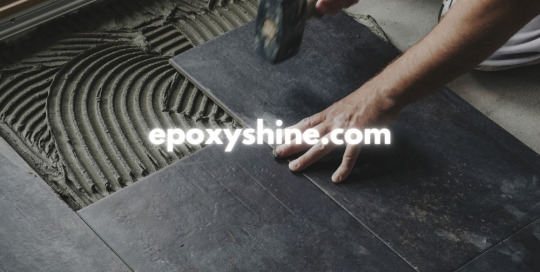
When it comes to enhancing the aesthetic and functional qualities of your floors, solid color epoxy flooring stands out as a top choice. Renowned for its durability and ease of maintenance, this sleek flooring option offers a seamless look that transforms any space into a modern haven. Beyond the allure of solid colors, the world of epoxy flooring also features exciting variations like the vibrant epoxy flake floors. These innovative surfaces blend color flakes into a clear resin, providing a unique texture and visual appeal that can suit any design vision.
Solid Color Epoxy Floor
When it comes to flooring solutions, the solid color epoxy floor stands out for its durability and aesthetic appeal. This type of flooring is created by mixing epoxy resin with hardeners, resulting in a seamless, impermeable surface that can withstand heavy foot traffic and harsh conditions.
One of the significant advantages of solid color epoxy floors is their versatility. These floors can be customized to fit various color schemes and designs, making them an excellent choice for both residential and commercial spaces. Whether you prefer a bold and vibrant tone or a more subtle hue, there's a solid epoxy color to meet your needs.
Additionally, the maintenance of a solid color epoxy floor is relatively simple. Regular cleaning with mild soap and water is often sufficient to keep the floor looking new. This low-maintenance feature, combined with its long-lasting nature, makes it a cost-effective flooring solution in the long run.
Epoxy Flake Floor
If you're looking for a versatile and aesthetically pleasing flooring option, epoxy flake floor is an excellent choice. This type of flooring combines the durability of epoxy with the decorative flair of colored flakes, creating a unique surface that's both functional and attractive.
One of the main benefits of epoxy flake floors is their resilience. They are resistant to stains, impacts, and chemicals, making them perfect for high-traffic areas such as garages, basements, or commercial spaces. Additionally, the textured surface of flake flooring provides excellent slip resistance, which enhances safety in both residential and industrial environments.
Beyond their practicality, epoxy flake floors offer endless design possibilities. You can choose from a variety of colors and sizes for the flakes, allowing you to customize your flooring to match your personal style or brand image. Whether you prefer a subtle blend or a bold statement, flake flooring can transform your space into a visually stunning area that stands out.
Flake Flooring
Flake flooring is an innovative and versatile flooring solution that combines aesthetics with durability. One of the defining features of flake flooring is its unique blend of colorful chips or flakes that are embedded into a clear epoxy base. This method not only enhances the visual appeal of the floor but also provides a strong, long-lasting surface that can withstand heavy foot traffic and wear.
Another significant advantage of flake flooring is its customizable nature. Homeowners and business owners can choose from an array of colors, shapes, and sizes of flakes, allowing them to create a floor that perfectly matches their style or corporate branding. This customization makes flake flooring an excellent choice for various applications, from residential garages to commercial spaces.
Moreover, flake flooring is easy to maintain. The smooth surface of the epoxy prevents dirt and grime from becoming lodged in the seams, making clean-up a breeze. With proper maintenance, flake flooring can maintain its vibrant appearance for years, making it a practical and stylish flooring choice.
411 notes
·
View notes
Text
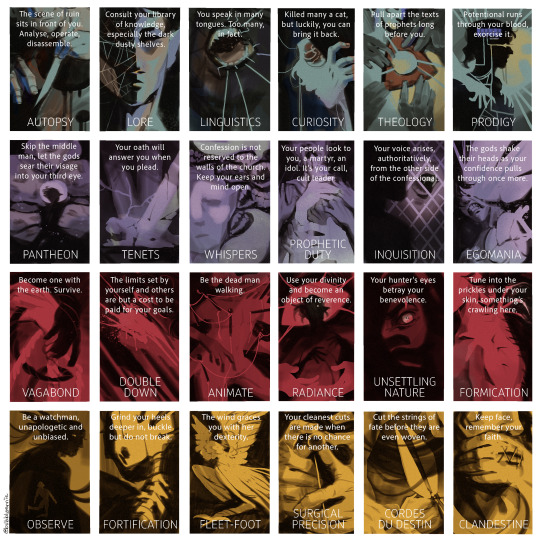


Back in May I designed some Disco Elysium skills for Erril :0 I SUPER love the artwork for DE, and I think I finished it around the time I drew this
art tag // commission info
Here's all of them, I'll elaborate below uwu
AUTOPSY: The scene of ruin sits in front of you. Analyse, operate, disassemble. This skill is for deduction, "what went on here" by picking apart a person, action, behaviour, scene etc. similar to Visual Calculus
LORE: Consult your library of knowledge, especially the dark dusty shelves. Erril cast's legend lore, ie, Encyclopedia
LINGUISTICS: You speak in many tongues. Too many, in fact. Mechanically he has like 8 or so languages. Prodigy/acolyte/half-elf build. It's cracked. Also applies to reading lips and figuring out writing or foreign language
CURIOSITY: Killed many a cat, but luckily, you can bring it back. Using hypotheticals to deduct answers or find clues like Investigation
THEOLOGY: Pull apart texts of prophets long before you. This is consulting like religious or historical texts and interpreting them. A manmade counterpart to Pantheon.
PRODIGY: Potential runs through your blood, exorcise it. It's a feat Erril has, I see it as using sheer willpower and luck to attempt something drastic/brand new, like raw talent
PANTHEON: Skip the middle man, let the gods sear their visage into your third eye. This one is more for direct communion with gods, a la Divine Intervention
TENETS: Your oath will answer you when you plead. Basically utilizing Erril's culty tenets as a way to justify or reason an action.
WHISPERS: Confession is not reserved to the walls of the church. Keep your ears and mind open. This is Shivers basically, picking up happenings around using your intuition.
PROPHETIC DUTY: Your people look to you, a martyr, an idol. It's your call, cult leader. This one utilizes a position of power, like using Authority or at least influencing people within the cult or status of the cult etc.
INQUISITION: Your voice arises, authoritatively, from the other side of the confessional. Kinda jumping off the Prophetic Duty one, this is more for actual questioning or interrogation.
EGOMANIA: The gods shake their heads as your confidence pulls through once more. This is utilizing reckless abandon, kinda like adrenaline/delusion fuelled actions that could lead to success. Erril's got crazy hubris bro
VAGABOND: Become one with the earth. Survive. This one focuses on tactical skills and navigation. Part of Erril's wanderlust and mountaineering I guess.
DOUBLE DOWN: The limits set by yourself and others are but a cost to be paid for your goals. This is like where Egomania becomes physical and basically becomes like a big burst of power at the cost of self or others.
ANIMATE: Be the dead man walking. Erril's got uncanny luck when it comes to being hit with damage but this is like Endurance essentially. Also applies to necromancy.
RADIANCE: Use your divinity and become an object of reverence. Tapping into the aasimar side of his lineage and using this as a way to intimidate or charm people, like Electrochemistry but from a divine perspective.
UNSETTLING NATURE: Your hunter's eyes betray your benevolence. This is Intimidation.
FORMICATION: Tune into the prickles under your skin, something's crawling here. This is about bugs under your skin, a very Perception/insight based skill, used for noticing things both from others and self.
OBSERVE: Be a watchman, unapologetic and unbiased. This is for Perception of the surroundings/incident and also ability to keep levelheaded and unbiased when using logic.
FORTIFICATION: Grind your heels deeper in, buckle, but do not break. This Endurance but for both mental and physical, like Constitution.
FLEET-FOOT: The wind graces you with her dexterity. An elf thing, this is for Dexterity, ability to escape both socially and physically.
SURGICAL PRECISION: Your cleanest cuts are made when there is no chance for another. This is similar to savoir-faire. Basically your ability to use your hands, ie, Sleight of Hand, but also doing it under pressure.
CORDES DU DESTIN: Cut the strings of fate before they are even woven. This is foresight, and being able to manipulate an outcome.
CLANDESTINE: Keep face, remember your faith. This is Composure or like a Charisma save, figuring out when to speak and when to not and how to act.
#disco elysium skills#disco elysium#de skills#dnd#dungeons and dragons#sunshan draws#character illustration#illustration#fantasy#sketch#digital art#digital painting#digital sketch#art#doodles#oc#ocs#concept art#character design#cleric#erril liadon#erril
87 notes
·
View notes
Text
"In China, a landscape architect is reimagining cities across the vast country by working with nature to combat flooding through the ‘sponge city’ concept.
Through his architecture firm Turenscape, Yu has created hundreds of projects in dozens of cities using native plants, dirt, and clever planning to absorb excess rainwater and channel it away from densely populated areas.
Flooding, especially in the two Chinese heartlands of the commercial south and the agricultural north, is becoming increasingly common, but Yu says that concrete and pipe solutions can only go so far. They’re inflexible, expensive, and require constant maintenance. According to a 2021 World Bank report, 641 of China’s 654 largest cities face regular flooding.
“There’s a misconception that if we can build a flood wall higher and higher, or if we build the dams higher and stronger, we can protect a city from flooding,” Yu told CNN in a video call. “(We think) we can control the water… that is a mistake.”

Pictured: The Benjakitti Forest Park in Bangkok
Yu has been called the “Chinese Olmstead” referring to Frederick Law Olmstead, the designer of NYC’s Central Park. He grew up in a little farming village of 500 people in Zhejiang Province, where 36 weirs channel the waters of a creek across terraced rice paddies.
Once a year, carp would migrate upstream and Yu always looked forward to seeing them leap over the weirs.
This synthesis of man and nature is something that Turenscape projects encapsulate. These include The Nanchang Fish Tail Park, in China’s Jiangxi province, Red Ribbon Park in Qinghuandao, Hebei province, the Sanya Mangrove Park in China’s island province of Hainan, and almost a thousand others. In all cases, Yu utilizes native plants that don’t need any care to develop extremely spongey ground that absorbs excess rainfall.

Pictured: The Dong’an Wetland Park, another Turescape project in Sanya.
He often builds sponge projects on top of polluted or abandoned areas, giving his work an aspect of reclamation. The Nanchang Fish Tail Park for example was built across a 124-acre polluted former fish farm and coal ash dump site. Small islands with dawn redwoods and two types of cypress attract local wildlife to the metropolis of 6 million people.
Sanya Mangrove Park was built over an old concrete sea wall, a barren fish farm, and a nearby brownfield site to create a ‘living’ sea wall.
One hectare (2.47 acres) of Turenscape sponge land can naturally clean 800 tons of polluted water to the point that it is safe enough to swim in, and as a result, many of the sponge projects have become extremely popular with locals.
One of the reasons Yu likes these ideas over grand infrastructure projects is that they are flexible and can be deployed as needed to specific areas, creating a web of rain sponges. If a large drainage, dam, seawall, or canal is built in the wrong place, it represents a huge waste of time and money.

Pictured: A walkway leads visitors through the Nanchang Fish Tail Park.
The sponge city projects in Wuhan created by Turenscape and others cost in total around half a billion dollars less than proposed concrete ideas. Now there are over 300 sponge projects in Wuhan, including urban gardens, parks, and green spaces, all of which divert water into artificial lakes and ponds or capture it in soil which is then released more slowly into the sewer system.
Last year, The Cultural Landscape Foundation awarded Yu the $100,000 Oberlander Prize for elevating the role of design in the process of creating nature-based solutions for the public’s enjoyment and benefit."
-via Good News Network, August 15, 2024
#china#wuhan#thailand#bangkok#landscape#wetlands#sponge city#landscape architecture#flooding#climate action#parks#public park#green architecture#sustainability#good news#hope
1K notes
·
View notes
Text
Vampire Au Master-ish Post
Summary -
Angel Island is the only life Sonic has ever known. Being trapped within the permanent barrier encasing the 8 islands isnt quite his style, so finding a way to destroy it and explore the world below has been his goal for as long as he can remember. Hes got a number of other things keeping him occupied however, trying to prevent the Robotnik family from taking over total control of the islands.
When he isnt fighting them off, hes hanging out with his friends, living his best life being a vampire both day and night. When he wants to get everyone off his back, and feed from his favorite vampire hater, Shadow, he uses his magic staff to change his appearance into an alter ego, Hoax the "Tenrec.”
–
Vampire au is a generally slice of life episodic style au, mostly focused on being lighthearted and goofy.
Occasionally plot driven with slightly heavier themes though. (And sometimes I hit the angst button for funsies)
Major Locations-
Angel Island- One main island and 7 smaller islands surrounding it, completely encased by an impenetrable barrier powered by the chaos emeralds. Separated into the Wild Zones and City Zones.
City Zones are Geralds surveillance state, a massive sprawling city with high tech from Ivo. The second sector of the city, a bit farther out, is Ivos sandbox, filled with casinos and terrible attractions, and many of his bases. Both plan to expand further into the island, they beef a little over who gets what.
Wild Zones are less developed areas further away from their reach, more community based overgrown homes. Left to nature and the recovery from old ruins. Sonic protects these areas with his life.
Sol- A pocket dimension, a society of majority vampires and mobians living peacefully together. The kingdom of Sol is a deep cave underground, with strange lush vegetation and ceiling so high it mimics the sky. There's massive tree roots buried deep in the canyon, an important food source for the vampires.
Accessed by a closed gateway hidden deep within Angel Island. Sol is the origin of vampires.
The mainland- the rest of the world outside of Angel Island
Characters-
Sonic- Bitten by a vampiric Chao around 5 years old, Sonic is a free spirited vampire who likes to live life a day at a time. He's thinks of himself as a smooth charmer, and he's a bit of a dater.
He loves the thrill of any sort of adventure he can dig his claws into on Angel Island, mostly stopping Eggman's onslaught of bots from trying to turn the untouched wild areas of the island into his newest casino.
He's up both day and night, usually only crashing to take naps, or otherwise being forced to sleep by his friends. Though the sun hurts him, he finds himself always missing the days where he could soak in its rays.
Hoax, Sonics night form, is a purely cosmetic change he shifts into with his star staff, a gift from Amy. He uses it for days when he wants a break from people trying to Get Him 24/7. He used to use it to break into Eggman's bases, where a strange, but tasty artificial blood was being held. More recently it's become a way to secure drinking that blood from the host himself.
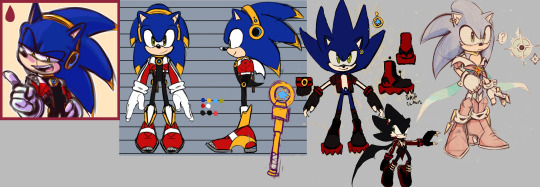
Shadow- Shadow is a paranoid mess of a man, with a deep running hatred for vampires, decked out in silver to keep them away. Though he prefers to be left alone, he will take any and all opportunities to kill a vampire if he suspects they want anything to do with him. It is often misguided. During the evening he works as a cook under Knuckles. During the night he heists the Robotniks facilities with Rouge, looking for any goods.
Whenever he travels out to the city zones, he wears a mask and full outfit designed after a vulture to hide his identity since he's wanted by the city.
Shadow has a special blood type, artificially made and containing black arms blood, it has strengthening and healing properties and tastes good to vampires ! Shadow tries to protect himself and his blood at all costs. Unfortunately he made a deal with Hoax to feed him. Also has no idea he has chaos control, the power is dormant in his body. Though he can manipulate the energy from Chaos Drives a little bit. He relies on guns and knifes day to day.
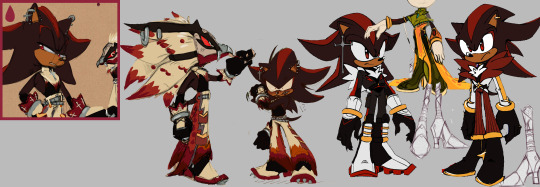
Amy- A half vampire seedrian witch. She's full of life and a bit quirky. She is learning to incorporate magic into all aspects of her life. A lot of attempts tend to cause chaos but she's always learning something new! She has a little bit of a crush on Sonic and has always dreamed of proposing to him with a ring that would protect him from the sun, though she isn't skilled enough to create it yet. Being a seedrian vampire means the flowers on her head need to photosynthesize under the moonlight to eat rather than drink blood. Though she does have a deep and instinctual urge to kill plants.
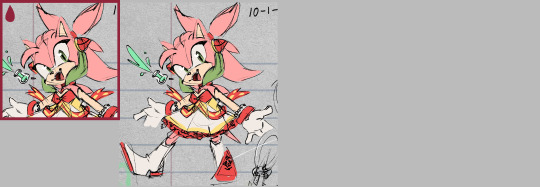
Tails- a lonely engineer, working on the edge of the city. New to teenagehood, he's edgy and grumpy all the time. He's very distant from his friends, incredibly insistent he's all grown up and needs no one but himself.
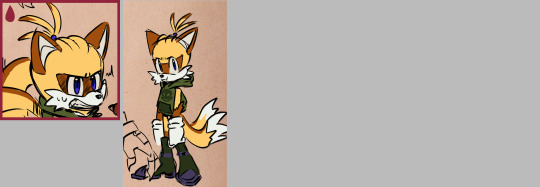
Knuckles- a hard working farmer out in the wilds, using his produce to supply his pizza food truck, which recently upgraded to a brick and mortar restaurant. In his free time he goes around Angel Island to treasure hunt and learn about the history of the island, littered with many ruins of ages past.

Rouge- a sneaky vampire who lives off the grid, completely unknown to the surveillance state of the city. Shadow lives with her in her home carved inside of a mountain to hide both of them. Huge fan of bat and blood themed decor. Shadow does Not know she's a vampire. Vampirism enhanced her bat features, incredibly good hearing to the point she needs to constantly wear noise canceling earbuds, and a massive wingspan.
She likes to rob the city, and exchange those goods for information from her shady dealers about gemstone hotspots on the island. Eventually she smooth talks her way into a position of power working under Queen Blaze of Sol to spy on Gerald.
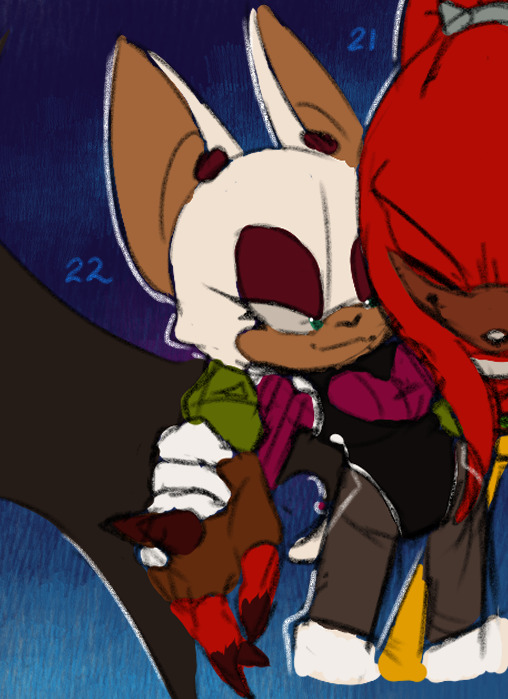
Blaze- Queen of the pocket dimension Sol. A few gateways exist on Mobius, one residing on Angel Island, though it has been cut off for years until Rouge reactivated it. A cold but caring ruler, she controls the artificial sun in their kingdom, keeping all of her vampiric subjects safe and happy. Rarely ever makes time for herself.
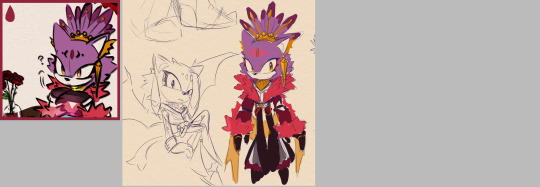
Silver- Blazes best friend who lives with her in the castle. (Need to add more for him :(). Works with Rouge and Mephiles dealing with matters on Angel Island. Eventually gets shark teeth from fusing with Mephiles too often.

Mephiles - Blazes comically evil advisor, she keeps him around because he's an old family friend, and an Ancient Vampire with vast power. Has no mouth to drink blood with, so he needs to possess the bodies of others. Silver willingly lets mephiles fuse with him, to feed, and to grant silver a power boost.
Gerald- after losing Maria he became very unwell, spending years accumulating power and taking control of the city. He's lost himself. Shadow was stolen from him years ago. He's still looking for him.
Black Doom- Doom wed that old man. Visited the day the barrier went up, now he's stuck here. Now that he's no longer able to take over the galaxy, his next evil plan was to become a landlord. Terrorizing people who live in the city.
Maria- Died in a targeted mob attack on Angel Island, Chaos and Tikal pitied her and let her have a spot in the master emerald ghost club.
Random lil plot stuff-
Sonic is a regular at Knuckles pizza place, likes to be annoying. One day they Will make him a chili dog pizza. Knuckles hopes he explodes but Shadow actually wants to kill him. He's not allowed to jump Sonic on the clock or else his pay gets docked </3
Random little bits about Sonic trying to steal from the claw machine and getting stuck, and trying to get a “delivered in under 30 minutes or free” pizza from the restaurant.
Sonic started a trend of extreme gear racing in Hydro City. He can also do a bunch of little party tricks with his star staff and knows nothing useful.
Shadow has massive gaps in his memory due to repression, he barely knows anything about his life before 16 (present day he's 19).
Knuckles and Shadow are close, knuckles being the first to find him. Since Shadow can't buy anything under his own name, Knuckles got him a hover motorcycle for deliveries.
When Shadow tells Knuckles about his deal with Hoax for the first time, Knuckles punches hoax so hard it turns him back into Sonic, making Knuckles the first to learn his identity outside of Amy, who helped him create the form.
Amy likes to follow Sonic on dates sometimes and mildly inconveniences them with her magic. Sonic usually finds this game more fun than the actual date
Maria and Tikal haunt the pizza place. They can eat pizza . They crave it. They also feed it to Chaos. Maria tries to talk to Shadow but he doesn't know who she is.
When making the blood deal with Shadow, Hoax had no idea Shadow was the guy under the vulture mask. He would have thought twice if he knew. Shadow also cut Hoaxs right hand during their first fight, its a permanent scar. Shadow says hed do it again.
Hoax slowly realizes how deeply unwell this little freak is.
Right when they kinda start getting comfortable with each other, a weird artifact that knuckles finds allows them a glimpse into the future. Sonic and Shadow are married. Hoax has to play it cool while Shadow starts loading his guns. This haunts the rest of their relationship development.
Amy delves into dark magic when she starts getting desperate about how slow she's progressing with her magic skill. It has adverse effects on beings created by her magic once she goes too far.
Mephiles lives in a comically evil wizard tower in the Sol castle. Mephiles can also shapeshift after drinking peoples blood, he can only shift as long as the blood is in his system.
Silver really wants Shadow to explode for trying to kill vampires, his friends and family.
(Things are still in rework state and also im forgetting things rn so more will probably be added)
249 notes
·
View notes
Text
as per a request in my local renegade server: here is my process (such as it is) for the stenciled covers i've done for my binds. obviously, huge thanks to everyone in the renegade discord for teaching me most of what i know about bookbinding. this tutorial only exists thanks to the resources they've made available and the conversations i've had there.
material list
vinyl cutter (i have a silhouette portrait 3) + mat + blade
stencil vinyl (i have this one, but have had some adherence troubles with it. unclear whether this is just The Nature Of Stencil Vinyl or whether there's a better brand out there. adhesive vinyl can also be a viable option, although i haven't personally experimented with it yet.)
transfer tape (i have this stuff. it's fine.)
weeding tools (i have this hook and a very fine tip pair of tweezers. i highly recommend getting a hook, especially if you—like me—are haunted by the specter of carpal tunnel. get an off-brand one or get one on sale, though. i only have the silhouette brand one because it was on clearance.)
acrylic medium (i have this one because it was on sale at the time i was buying acrylic medium. when i replace it, i will be replacing it with a matte one. the gloss definitely has a noticeable sheen that i don't love.)
acrylic paint (literally any paint will do. i've been mostly using the decoart extreme sheen because it's $4 at michaels. you may be noticing a theme here.)
stiff stenciling brushes (the ones i have are similar to these but cost even less. again, there's a theme here.)
an iron and some parchment paper (jury is still out on whether using heat to "set" the pattern is necessary, but i do feel like it melts the paint a bit into the bookcloth and lessens the extent to which the pattern sits above the bookcloth.)
your trusty bone folder
instructions and a truly hideous number of words under the cut.
step 0.5: discern what will make a good stencil and what will make you hate yourself, your life, and the art of bookbinding
there are a LOT of different ways to put titling on a book. you could do a paper cover with a printed design or paste paper labels onto bookcloth or foil your title onto your cover with heat activated foil. the best method depends on what kind of design you have in mind, what tools you have available to you, and what materials you're working with (for example, i've had very bad luck getting acrylic paint to adhere to Allure bookcloth, but Allure does foil like a dream).
as far as stencils are concerned, you can kind of sort cover designs into three categories:
BEST for stencils: big, bold shapes on larger format books (think letter folio or letter/legal quarto)
OKAY for stencils, but you might hate yourself: intricate detail at a large enough form factor for it to be cut well by your vinyl cutter
BAD for stencils, you will die and it will hurt the entire time you are dying: lots of intricate detail and lots of fine lines
below are examples of category 1, 2, and 3 (all designed for letter folio). to be clear, category 3 can technically be possible, depending on the design. but only undertake it with the awareness that you will die, and it will hurt the entire time you are dying.
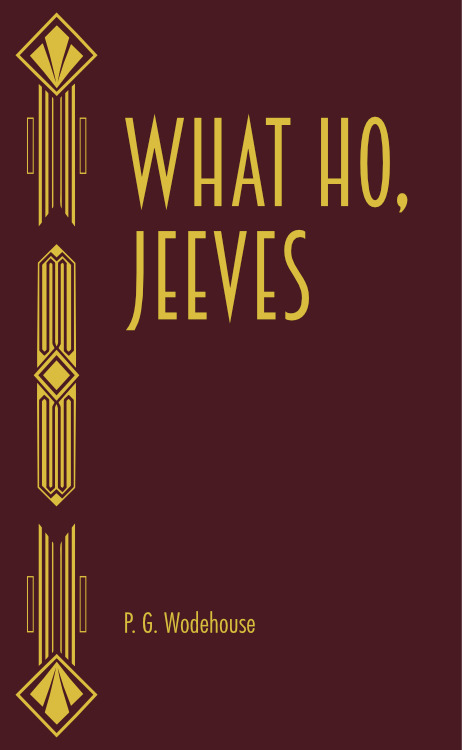
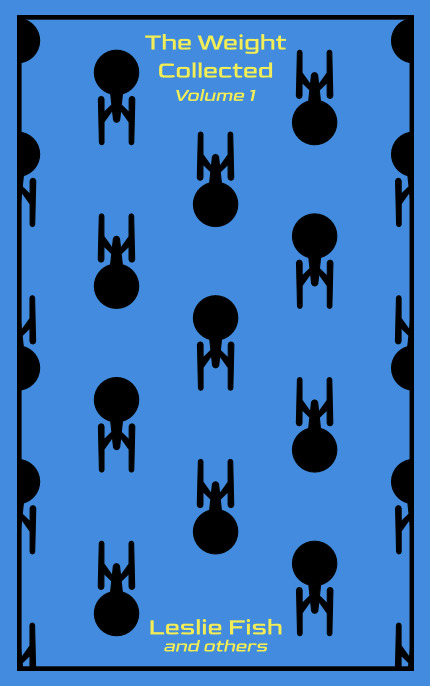
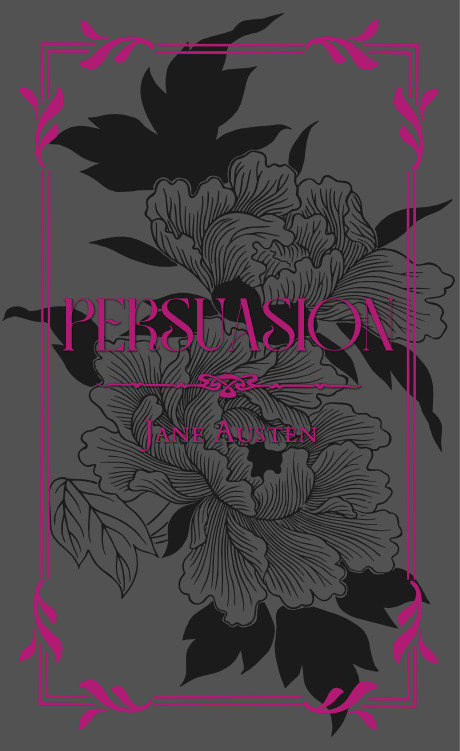
step 1: design a thing to put on your cover
i'm not going to go too in depth on this because cover design is a HUGE can of worms. a few pointers, though:
i never start designing my cover until my text block is done. this allows me to design my cover at "full size" based on the measured size of my text block and cover boards.
i fully lay out my cover in a separate program before exporting a transparent PNG to silhouette studio (or whichever proprietary software you have to use to communicate with your particular vinyl cutter). i use affinity designer. some free options would be inkscape (if you want to work with vectors) or gimp.
i design my cover on a document with dimensions of (HEIGHT of boards + 20 mm) x (WIDTH of boards or spine + 20 mm) and 10 mm margins. the area within the margins represents the actual dimensions of the thing i'm designing, while the area outside of the margins creates a mask that prevents me from getting paint on things i don't want paint on (like the covers, if i'm creating a spine stencil).
i always outline my document with a 3 or 4pt black line. this creates the outer edge of my stencil and provides my vinyl cutter with a cut line. if you're working with a smaller vinyl cutter (like the cricut joy) there are ways to jigsaw designs together from smaller pieces of vinyl, but i'm not the person to ask about that. i specifically bought a portrait so that i didn't have to worry about that.
here's an example of one of my affinity files from a recent cover. i've exaggerated my outline to make it clearer. you can also see that i use affinity to experiment with color combinations. before i export, i turn all my elements black and make any backgrounds transparent, meaning that the PNG i import into silhouette studio looks like the one on the right.
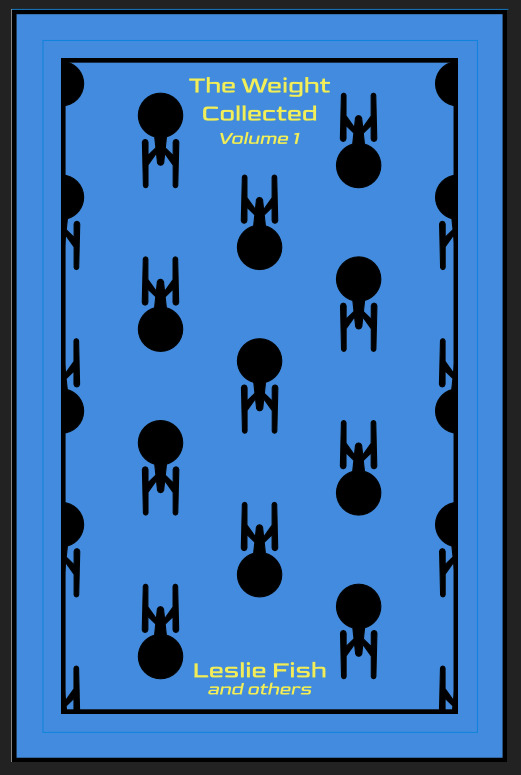

step 2: cut and weed your stencil
again, not going to go terribly in depth here. there is a veritable army of youtubers out there with tutorials about how to use [insert propriety vinyl cutter software here]. but, again, a few pointers:
with my particular vinyl cutter and stencil vinyl, i usually cut my stencils with the material set to "washi," depth at 1, force at 13, and speed at 4. google, experiment, see what works. also, you want to put your stencil vinyl on the mat with the blue vinyl facing UP, and you don't want to mirror your design. with stencils, what you see is what you get.
i cut my vinyl a bit bigger than necessary because i'd rather waste a bit of vinyl than have to worry about a stencil falling off the edge of my vinyl because i misaligned it on the mat.
unlike HTV, you will be weeding out all the black parts of your original image. be prepared to hate the letters "e" and "a" forever, because you will have to somehow keep the little eye of them in place while you pry out the rest of it.
step 3: apply your stencil to your case
alright, now let's get into the meat of it. i always stencil after my case is finished but before i case in my book. this means that if i totally fuck it up, i can trash the case instead of the entire book.
additionally, i completely stencil my spine first (as in lay down stencil, paint, remove stencil) and then stencil my covers. i've found that it's easier when you don't have stencils overlapping and sticking to each other.
OPTIONAL STEP: mark guides onto your cover to help you position your stencil. whether or not i do this step depends on the design. a lot of the time, i just eyeball it. but for some designs, precision is key. for those projects, i use my ruler to mark out guides in white chalk for where i need certain elements of the stencil to fall. (i used guide marks for the "penguin clothbound" copies of the The Weight Collected that i've been using as an example in this post—the black rectangular boarder would've made uneven placement REALLY obvious.)
use transfer tape to remove your vinyl from its slick backing. what i've found is that you really, really don't want your transfer tape to be too sticky. you want it just barely sticky enough to pick up the stencil if you rub it down with a bone folder or your fingernail. i have a piece of transfer tape that i stuck to my jeans a bunch of times and then proceeded to use for 8 books in a row. it is, frankly, still a little bit too sticky. i have rolled it up so that i can use it for the next 8 books, at which point it will presumably be the right level of stickiness.
position your stencil. when you're happy with it, rub it firmly down with your bone folder. then do it again. then use your fingernail to score down over the titling text. then pray. in my experience, stencils prefer to stick to transfer tape rather than bookcloth. ymmv.
start at one corner of your stencil. carefully begin peeling back the transfer tape. i've found that essentially folding back the transfer tape (like, the corner that's been freed from the stencil being folded back away from the stencil) helps the tape to release. go slowly, rubbing down with the bone fold as necessary.
after you've finally manage to pry the tape off, go back and smooth down the stencil and firmly rub it down to get it to adhere to the bookcloth as thoroughly as possible with as few ripples or air bubbles as possible.
step 4: paint time!
here is a secret that the renegade discord taught me that i am now passing on to all of you: before you put any paint on your stencil, put down a layer of clear acrylic medium. the medium will finish the job of pasting down the stencil to your cover, and any leaks that happen in the process will be clear medium instead of colored paint (and will therefore be basically unnoticeable). ergo:
stipple a thin coat of acrylic medium over your stencil. you want to use an up-and-down daubing motion, not a brushing motion. brushing will get paint under your stencil. let dry.
after your medium is dry, stipple a few thin coats of your colored acrylic paint onto your stencil. let dry between coats. (i usually find that two coats is enough.) again, try to keep your coats thin. you don't want a thick layer of paint because that will create a raised surface above your bookcloth.
let your paint fully dry. i usually leave it overnight, but if i'm feeling especially impatient, i still make sure to at least give it a good three or four hours.
peel up your stencil. your weeding tools will once again come into play here to pry up little bits and pieces of stencil (like the stupid eyes of the "a"s and "e"s that were so annoying during the initial weeding stage).
step 5: optional setting stage
again, jury is still out on whether or not this is necessary, and the effects are pretty subtle. but i do it every time anyway. some tips:
use an iron on very low heat (i keep mine at the low end of the synthetic setting) and with steam turned OFF
keep a piece of parchment paper (NOT waxed paper. you want the slick paper that you put under cookies to keep them from sticking to the pan.) between the iron and your cover.
press the iron down, don't rub it like you're ironing a shirt. it's possible to smear your paint doing that (ask me how i know).
i usually lay the iron down on a section for 10-15 seconds at a time, then lift it and move it to another section.
start with less of everything (less heat, less time) and build up. always better to be conservative with this.
i usually continue until the paint is warm to the touch, then move onto another section. after it's cooled, i evaluate if i feel like it's melted into the cloth enough. if not, i repeat the process.
step 6: BOOK
congrats, you have put a design on a book cover. the world is your oyster. go forth and make books. become ungovernable.



114 notes
·
View notes
Text
Views of Hermitcraft 2025!!!

(header art by Sevenchi on twitter and instagram)
The 2025 Views of Hermitcraft Calendar is now up and running!
If you want to order the physical calendar already designed by our team, fill out this form and submit your email to receive an invitation to order the calendar from Mixbook. The form will be open until January 5th. If you want to preview the physical calendar, check it out here on Mixbook.
You can view the physical calendar, here.
If you want to design and print your own physical calendar or download any images, use the Views Calendar Images folder, where you can download the same images we used. You are welcome to use a different website or photo printing service to create your own Views Calendar.
If you want the digital calendar you can download the Digital Calendar PDF from this PDF This is a 14-month calendar with the same basic designs and dimensions as the physical calendar, with a few bonus details.
Frequently Asked Questions and Credits below the cut:
Q. Do you make any money from this?
A. No, we do not. While the Mixbook calendar does cost money, none of it goes to the organizers or artists. It only goes to the printers to acquire the physical copy.
Q. What size is the calendar?
A. The calendar images are 12”x12”, and the full calendar is 12”x24”.
Q. What is the price of the physical calendar?
A. The final price naturally depends on shipping, but the base cost of the calendar right
now is $44.99. However, Mixbook may have coupons available to make your order cheaper.
Q. How is the quality of the physical calendar?
A. It’s great! The calendar itself is made of sturdy matte paper. The image quality is fantastic, the covers lovely, and the calendar itself is sturdy and well-constructed.
Q. What if Mixbook doesn’t ship to my country?
A. Mixbook ships to a wide range of international locations, but if they don’t ship to your specific country, you can download the digital calendar, or design your own and print it locally.
Artist Credits:
Thank you so much to the team of incredible artists and mods who made this project possible! Go and give them some love!
Artists for Views of Hermitcraft:
Front Cover: Sparrow on tumblr
January: Dino on twitter
February: Nhyhu on tumblr, instagram and twitter
March: Tomato on twitter and tumblr
April: Pocket-sized-gentleman on tumblr
May: Mer on tumblr
June: Kaledo on tumblr, instagram and twitter
July: Hoshi_umii on tumblr and twitter
August: Berrysquared on tumblr and twitter
September: Sevenchi on twitter and instagram
October: Messiergalaxy on twitter, tumblr, and instagram
November: Shepscapades on tumblr and twitter
December: Wasyago on tumblr
Back Cover: Joifee on tumblr
Mods:
Teahound on Tumblr
Medusa on Tumblr
Chrysalizzm on Tumblr
345 notes
·
View notes
Text
Tesla’s Wardenclyffe Tower: Built on Sound Math, Undone by Cost and Misunderstanding

Let’s set the record straight—Nikola Tesla’s Wardenclyffe Tower was a high-voltage experimental transmission system grounded in quarter-wave resonance and electrostatic conduction—not Hertzian radiation. And the math behind it? It was solid—just often misunderstood by people applying the wrong physics.
In May 1901, Tesla calculated that to set the Earth into electrical resonance, he needed a quarter-wavelength system with a total conductor length of about 225,000 cm, or 738 feet.
So Tesla’s tower design had to evolve during construction. In a letter dated September 13, 1901, to architect Stanford White, Tesla wrote: “We cannot build that tower as outlined.” He scaled the visible height down to 200 feet. The final structure—based on photographic evidence and Tesla’s own testimony—stood at approximately 187 feet above ground. To meet the required electrical length, Tesla engineered a system that combined spiral coil geometry, an elevated terminal, a 120-foot vertical shaft extending underground, and radial pipes buried outward for approximately 300 feet. This subterranean network, together with the 187-foot tower and carefully tuned inductance, formed a continuous resonant conductor that matched Tesla’s target of 738 feet. He described this strategy in his 1897 patent (No. 593,138) and expanded on it in his 1900 and 1914 patents, showing how to simulate a longer conductor using high-frequency, resonant components. Even with a reduced visible height, Tesla’s system achieved quarter-wave resonance by completing the rest underground—proving that the tower’s electrical length, not its physical height, was what really mattered.
Tesla calculated his voltages to be around 10 million statvolts (roughly 3.3 billion volts in modern SI), so he had to consider corona discharge and dielectric breakdown. That’s why the terminal was designed with large, smooth spherical surfaces—to minimize electric surface density and reduce energy loss. This was no afterthought; it’s a core feature of his 1914 patent and clearly illustrated in his design sketches.
Now, about that ±16 volt swing across the Earth—what was Tesla talking about?
He modeled the Earth as a conductive sphere with a known electrostatic capacity. Using the relation:
ε × P = C × p
Where:
ε is the terminal’s capacitance (estimated at 1,000 cm)
P is the applied voltage (10⁷ statvolts)
C is the Earth’s capacitance, which Tesla estimated at 5.724 × 10⁸ cm (based on the Earth’s size)
p is the resulting voltage swing across the Earth
Plugging in the numbers gives p ≈ 17.5 volts, which Tesla rounded to ±16 volts. That’s a theoretical 32-volt peak-to-peak swing globally—not a trivial claim, but one rooted in his framework.
Modern recalculations, based on updated geophysical models, suggest a smaller swing—closer to ±7 volts—using a revised Earth capacitance of about 7.1 × 10⁸ cm. But that’s not a knock on Tesla’s math. His original ±16V estimate was fully consistent with the cgs system and the best data available in 1901, where the Earth was treated as a uniformly conductive sphere.
The difference between 7 and 16 volts isn’t about wrong numbers—it’s about evolving assumptions. Tesla wrote the equation. Others just adjusted the inputs. His premise—that the Earth could be set into controlled electrical resonance—still stands. Even if the voltage swing changes. The vision didn’t.
Wouldn't that ±16V swing affect nature or people? Not directly. It wasn’t a shock or discharge—it was a global oscillation in Earth’s electric potential, spread evenly across vast distances. The voltage gradient would be tiny at any given point—far less than what’s generated by everyday static electricity. Unless something was specifically tuned to resonate with Tesla’s system, the swing had no noticeable effect on people, animals, or the environment. It was a theoretical signature of resonance, not a hazard. While some early experiments in Colorado Springs did produce disruptive effects—like sparks from metal objects or spooked horses—those involved untuned, high-voltage discharges during Tesla’s exploratory phase. Wardenclyffe, by contrast, was a refined and carefully grounded system, engineered specifically to minimize leakage, discharge, and unintended effects.
And Tesla wasn’t trying to blast raw power through the ground. He described the system as one that would “ring the Earth like a bell,” using sharp, high-voltage impulses at a resonant frequency to create standing waves. As he put it:
“The secondary circuit increases the amplitude only... the actual power is only that supplied by the primary.” —Tesla, Oct. 15, 1901
Receivers, tuned to the same frequency, could tap into the Earth’s oscillating potential—not by intercepting radiated energy, but by coupling to the Earth’s own motion. That ±16V swing wasn’t a bug—it was the signature of resonance. Tesla’s transmitter generated it by pumping high-frequency, high-voltage impulses into the Earth, causing the surface potential to oscillate globally. That swing wasn’t the energy itself—it acted like a resonant “carrier.” Once the Earth was ringing at the right frequency, Tesla could send sharp impulses through it almost instantly, and tuned receivers could extract energy.
So—was it feasible?
According to Tesla’s own patents and 1916 legal testimony, yes. He accounted for insulation, voltage gradients, tuning, and corona losses. His design didn’t rely on brute force, but on resonant rise and impulse excitation. Tesla even addressed concerns over losses in the Earth—his system treated the planet not as a passive resistor but as an active component of the circuit, capable of sustaining standing waves.
Wardenclyffe wasn’t a failure of science. It was a casualty of cost, politics, and misunderstanding. Tesla’s system wasn’t just about wireless power—it was about turning the entire planet into a resonant electrical system. His use of electrostatics, high-frequency resonance, and spherical terminals was decades ahead of its time—and still worth studying today.
“The present is theirs; the future, for which I really worked, is mine.” —Nikola Tesla
#nikola tesla#science#history#quotes#electricity#wireless#technology#mathematics#math#engineering#power#Wardenclyffe#ahead of his time#ahead of our time
85 notes
·
View notes